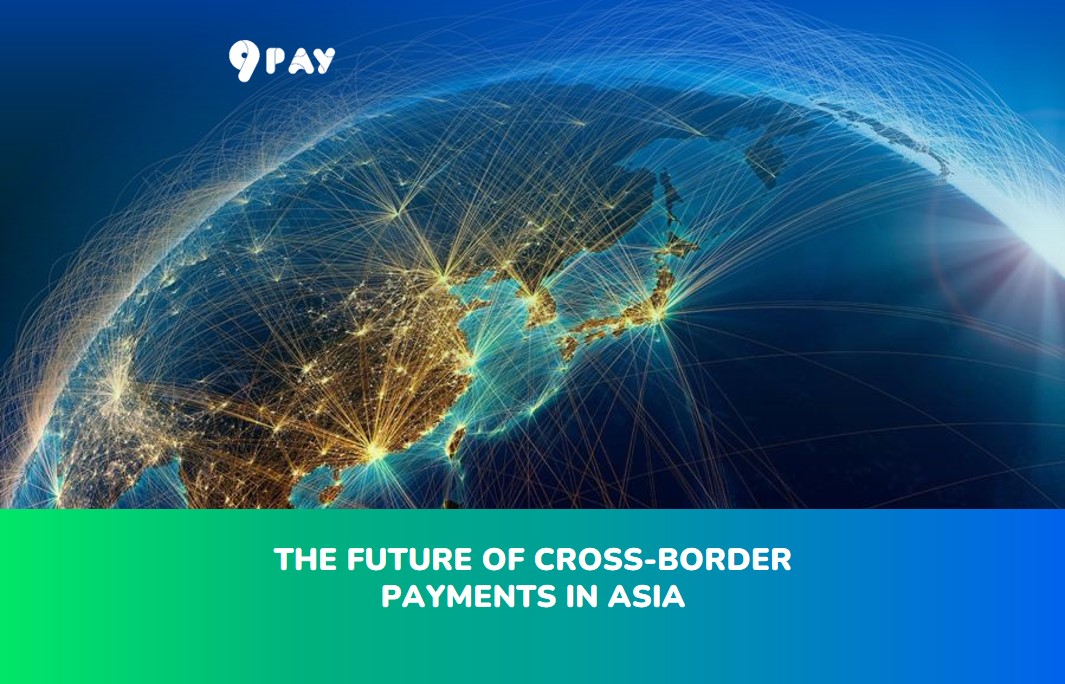The future of cross-border payments in Asia
Asia is steadily redefining the future of cross-border payments.

Cross-border payments in the Asia-Pacific region hold immense potential. According to a report by FXC Intelligence presented at Money20/20, the region’s cross-border payments market reached a total of USD 12.8 trillion in 2024 and is projected to grow to USD 23.8 trillion by 2032. This figure far exceeds global averages and is expected to account for over one-third of the world’s total cross-border transaction volume.
Technological innovation as a key driver of cross-border payment evolution
Asia is marked by diverse financial systems — with each country featuring distinct infrastructure, regulatory frameworks, and consumer behaviors. Yet, the region has consistently demonstrated a strong track record in driving technological innovation.
India’s Unified Payments Interface (UPI) is a notable example, having played a central role in advancing financial inclusion over the past decade. In the next ten years, the focus is shifting toward interconnecting such systems across the continent. In many Asian markets, cross-border payments are becoming as seamless and affordable as domestic transactions. The Bank for International Settlements (BIS)’s Nexus project exemplifies this push to enhance interoperability and accessibility.
Stablecoins are also emerging as a promising component of the region’s payment infrastructure. Adoption levels across Asia already surpass those in the West, with major corporations integrating widely used stablecoins into their cross-border systems — a practice still relatively rare among U.S. firms. Nevertheless, banks remain cautious, evaluating the technology while awaiting broader market moves.
Another critical area of development is digital wallets. After gaining strong footholds through platforms such as Alipay, WeChat Pay, and Grab, the current emphasis is on achieving interoperability across wallets to minimize cross-border friction.
These are not the only technologies propelling innovation in Asia’s payment landscape. QR codes, central bank digital currencies (CBDCs), and application programming interfaces (APIs) are also contributing to a future where no single technology dominates, but rather, an ecosystem of interoperable networks and tools coexists and complements one another.
A regional shift away from the U.S. dollar
In parallel with technological advancements, Asia is also witnessing a gradual shift away from reliance on the U.S. dollar and dollar-centric financial institutions — a trend that is reshaping the regional financial architecture.
This shift is most evident in China. Data from the State Administration of Foreign Exchange (SAFE) reveals significant changes in currency usage for non-bank inflows over the past decade. In March 2010, 86% of such transactions were conducted in USD, while less than 0.5% were in renminbi (RMB). By March 2025, the RMB had overtaken the USD, accounting for 53% compared to 43%.
Still, given the region’s fragmented and diverse financial systems, fully moving away from the dollar remains a complex challenge. The USD continues to serve as the world’s default reserve currency in the near term. Nonetheless, multiple initiatives are underway — accelerated in part by disruptions tied to U.S. trade tariffs.
These efforts span both traditional fiat-based solutions and digital currencies, including moves to develop alternatives to dominant USD-backed stablecoins such as USDC and USDT. Regulatory initiatives have provided further momentum, such as the Hong Kong Monetary Authority’s Stablecoin Bill introduced in December 2024, which aims to establish a licensing framework for the technology.
While still under legislative review, the bill has already spurred a wave of innovation, including a joint venture between Standard Chartered, Web3 company Animoca Brands, and telecom group HKT to issue a Hong Kong dollar-pegged stablecoin.
Other projects are also exploring the intersection of emerging technologies and currency diversification. The BIS-led mBridge project, for example, is working to develop a multi-central bank digital currency platform connecting Thailand, China, Hong Kong, the UAE, and Saudi Arabia.
From technological breakthroughs to structural shifts in currency reliance, Asia is steadily redefining the future of cross-border payments. With its rapid growth and ongoing efforts to enhance interoperability, the region is not only a key market but also a driving force behind the transformation of global payment systems in the decade ahead.
Source: Forbes








